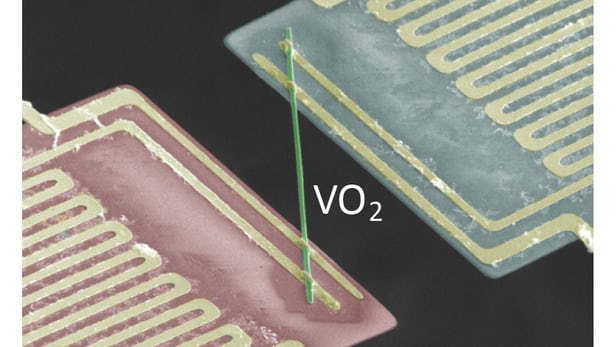
Breaking News
Endless Opportunities on Life's Highway
THE UNCONSTITUTIONAL INCOME TAX
 WOW: Schumer now privately BEGGING to reopen the Gov – Liberal Hivemind
WOW: Schumer now privately BEGGING to reopen the Gov – Liberal Hivemind
 Obamacare's Devastating Legacy: Skyrocketing Costs, Useless Coverage, and Windfall Profits...
Obamacare's Devastating Legacy: Skyrocketing Costs, Useless Coverage, and Windfall Profits...
Top Tech News
 Future of Satellite of Direct to Cellphone
Future of Satellite of Direct to Cellphone
 Amazon goes nuclear with new modular reactor plant
Amazon goes nuclear with new modular reactor plant
 China Is Making 800-Mile EV Batteries. Here's Why America Can't Have Them
China Is Making 800-Mile EV Batteries. Here's Why America Can't Have Them
 China Innovates: Transforming Sand into Paper
China Innovates: Transforming Sand into Paper
 Millions Of America's Teens Are Being Seduced By AI Chatbots
Millions Of America's Teens Are Being Seduced By AI Chatbots
 Transhumanist Scientists Create Embryos From Skin Cells And Sperm
Transhumanist Scientists Create Embryos From Skin Cells And Sperm
 You've Never Seen Tech Like This
You've Never Seen Tech Like This
 Sodium-ion battery breakthrough: CATL's latest innovation allows for 300 mile EVs
Sodium-ion battery breakthrough: CATL's latest innovation allows for 300 mile EVs
 Defending Against Strained Grids, Army To Power US Bases With Micro-Nuke Reactors
Defending Against Strained Grids, Army To Power US Bases With Micro-Nuke Reactors
Bizarre metal conducts electricity without heating up

In an apparent contradiction to textbook physics, a metal has been identified that conducts electricity but produces almost no heat in the process. Such a strange property may be expected to occur in conductors operating at cryogenic temperatures, but a team of researchers led by the Lawrence Berkeley National Laboratory claims to have discovered this unique property in vanadium dioxide at temperatures of around 67 °C (153 °F).
Of all the metals found on Earth, most are both good conductors of heat and electricity. This is because classic physics dictates that their electrons are responsible for both the movement of electrical current and the transfer of heat. This correlation between electrical and thermal conductivity is dictated by the Wiedemann-Franz Law, which basically says that metals that conduct electricity well are also good conductors of heat.
However, metallic vanadium dioxide (VO2) seems to be different. When the researchers passed an electrical current through nanoscale rods of single-crystal VO2, and thermal conductivity was measured, the heat produced by electron movement was actually ten times less than that predicted by calculations of the Wiedemann-Franz Law.
"This was a totally unexpected finding," said Professor Junqiao Wu, a physicist at Berkeley Lab's Materials Sciences Division. "It shows a drastic breakdown of a textbook law that has been known to be robust for conventional conductors. This discovery is of fundamental importance for understanding the basic electronic behavior of novel conductors."
And what a novel conductor VO2 is.
When heated to 67 °C (153 °F), vanadium dioxide undergoes an abrupt transition from an insulator to a conductor, as its crystal structure transforms. This structural alignment of VO2 into a metal provides clues as to why the material is able to transfer electrical current with negligible heating.

 SpaceX Heat Shield and Starship Mass Production
SpaceX Heat Shield and Starship Mass Production

